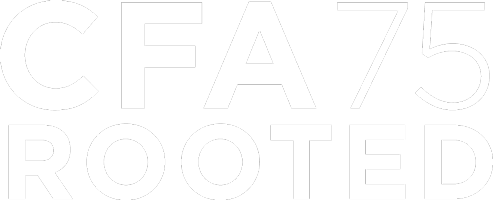By Kira Sincock
Hey CFA Students!
For me, art has always felt very personal. I’ve always had the mentality that art is something that is mine, and is something I strive to improve on for my own benefit. Last year my perspective changed during the ArtsForce Career Trek to Rise Up School of Dance, when I learned how the director of the studio was bringing her passion to those with less access to it. I realized then that art is something that can be shared with others. Since that experience, I’ve come to understand that it’s important to give back to your community, and that art is something that can be shared rather than something that is kept selfishly.
Because of that Career Trek, I began to make an effort to meet people who centered their artistic focus around community engagement.
I reached out to Sarah Longoria to learn more about how to make an impact on your community as an artist because I noticed she saw a gap within her own community. Sarah is the director of Municipal Ballet Co., which is a local, non-profit organization that strives to share ballet with the Salt Lake community in unconventional ways and places. She completed both her undergraduate and master’s studies at the University of Utah, and most of her time now is dedicated to running Municipal Ballet Co.
Why is it important for Municipal Ballet Co. to exist? What is the fundamental mission of the company? Sarah recounted a moment in the years after her undergraduate degree where she was at a bar and a not-so-great band was playing. While the band wasn’t the best, she recognized that they still had the opportunity to play in a space in front of an audience. This made her wonder: why weren’t there chances like this for ballet dancers?
Sarah began to think, “Where’s all of the bad ballet? Where are the people experimenting with ballet where people can go and see it and decide for themselves what kind of ballet they like to see?” The lack of opportunities for ballet dancers, beyond the traditional sense, played a key role in Sarah’s decision to return to school for her master's degree.
"It was important to me that the dancers who want to live here have a place to do ballet. It is art for our own people."
I don’t come from a dance background, so I was surprised when Sarah explained to me that a lot of work is dictated by what the larger company thinks it can sell to audiences. With other mediums, I’ve seen that there is more experimentation and a more accessible way to get your work out there to the public. Dance companies work hard to build seasons that will draw full houses. Because of this, the director often has a large say in what ballet looks like for everyone, from the repertoires to the company members. The public doesn’t really have a say on if they like it or not — they either go to the show or they don’t, which is different from how other art forms operate in relation to their audiences.
Sarah’s thesis project in graduate school served as the catalyst for Municipal Ballet Co. She started a dance company, performing at venues off campus and at events like Craft Lake City. The company continued to perform post-graduation and began to incorporate other local artists, such as live musicians. One of their most notable shows early on was at the Ladies’ Literary Club, which sold out each night. Since then, Municipal Ballet Co. has evolved from an LLC to a non-profit, and have performed in many other non-traditional locations, such as sidewalks, libraries, bars, and historical buildings.
Running a non-profit in the arts is something that I’ve always been curious about, but has always seemed so daunting. A large part of Sarah’s role is applying for grants. As a non-profit, you always have to justify what you’re doing, and be specific with what you plan to do. “The way that I work is I like to come up with things naturally. Ideas will come to me and come together, and they are always changing as they go along depending on who is collaborating. I don’t really know what’s going to happen until it happens,” Sarah said. Despite that, among other difficult tasks like budgeting, she said that the shows and the feedback from the audiences are what make her work most worthwhile. Sarah mentioned that oftentimes after her shows, people will come up to her in tears and thank her for doing it, which she says is really meaningful.
The dancers themselves have similar reactions: “I think there is a realization that ballet can be fun when they do our shows.” Ballet is something that can often be a stressful experience for both the audience and dancers due to its rigidness, so Municipal Ballet Co. attempts to combat this by creating a more casual atmosphere.
A huge part of Municipal Ballet Co.’s mission is to make ballet accessible to the community. Sarah talked about how she was endlessly fascinated with Utah, and could only imagine Municipal Ballet Co. existing in Salt Lake. “As far as working with local artists, I can keep finding local artists that are good and they are here and they want to be here. It was important to me that the dancers who want to live here have a place to do ballet. It is art for our own people.” In terms of why Municipal Ballet Co. strives to bring art to the community, Sarah answered “The point of it is experiencing a common humanity, and when you have these shared experiences with people who you know and will see around, it brings the community together”.
For students looking to make an impact on the community, Sarah advises to follow the things that really interest you and to be persistent. A lot of times, things will not go the way you want or people won’t agree to your requests, and Sarah says that persistence has helped her overcome these situations. “If you really want to share something, don’t give up just because it doesn’t work out easily. Keep trying.”
Because Sarah makes her living from a variety of sources, there is not as much pressure on the monetary gains of Municipal Ballet Co. Her perspective helped me to debunk a stereotype that many artists face. “As an artist, even if you need to be a server to make your money, still do your art. Try not to think that it’s worth any more or less based off of how much money you make off of it”.
ArtsForce Takeaways:
-
If you don’t see opportunities in the arts that you think should exist, make them yourself. Create what you want to see.
-
You can share your art with the community as a way to exercise your talents unconventionally.
-
You are always an artist no matter what job you have or how much you are paid for your art.
Author Kira Sincock is an Emerging Leaders Intern with ArtsForce. She is studying Game Art within the Entertainment Arts and Engineering program, with a minor in Drawing in the Department of Art & Art History.


